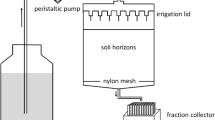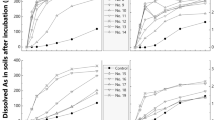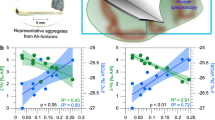Abstract
SEVERAL mechanisms have been postulated to account for the translocation of iron and aluminium in the process of podzol formation. Thus Jones and Willcox1 suggest that simple organic acids such as oxalic acid are responsible for the solution of the sesquioxides, while numerous workers2 consider that the free oxides are peptized by the action of humus and move as sols.
This is a preview of subscription content, access via your institution
Access options
Subscribe to this journal
Receive 51 print issues and online access
$199.00 per year
only $3.90 per issue
Buy this article
- Purchase on SpringerLink
- Instant access to full article PDF
Prices may be subject to local taxes which are calculated during checkout
Similar content being viewed by others
References
Jones, H. T., and Willcox, J. S., J. Soc. Chem. Indust., 48T, 304 (1929).
Morison, C. G. T., and Sothers, D. B., J. Agric. Sci., 6, 84 (1914). Aarnio, B., Pochvovednie, 17, (2), 1 (1915). Mattson, S., Soil Sci., 31, 57 (1931). Deb, B. C., J. Soil Sci., 1, 212 (1950).
Bloomfield, C., J. Soil Sci., 2, 196 (1951).
Author information
Authors and Affiliations
Rights and permissions
About this article
Cite this article
BLOOMFIELD, C. Translocation of Iron in Podzol Formation. Nature 170, 540 (1952). https://doi.org/10.1038/170540a0
Issue date:
DOI: https://doi.org/10.1038/170540a0



